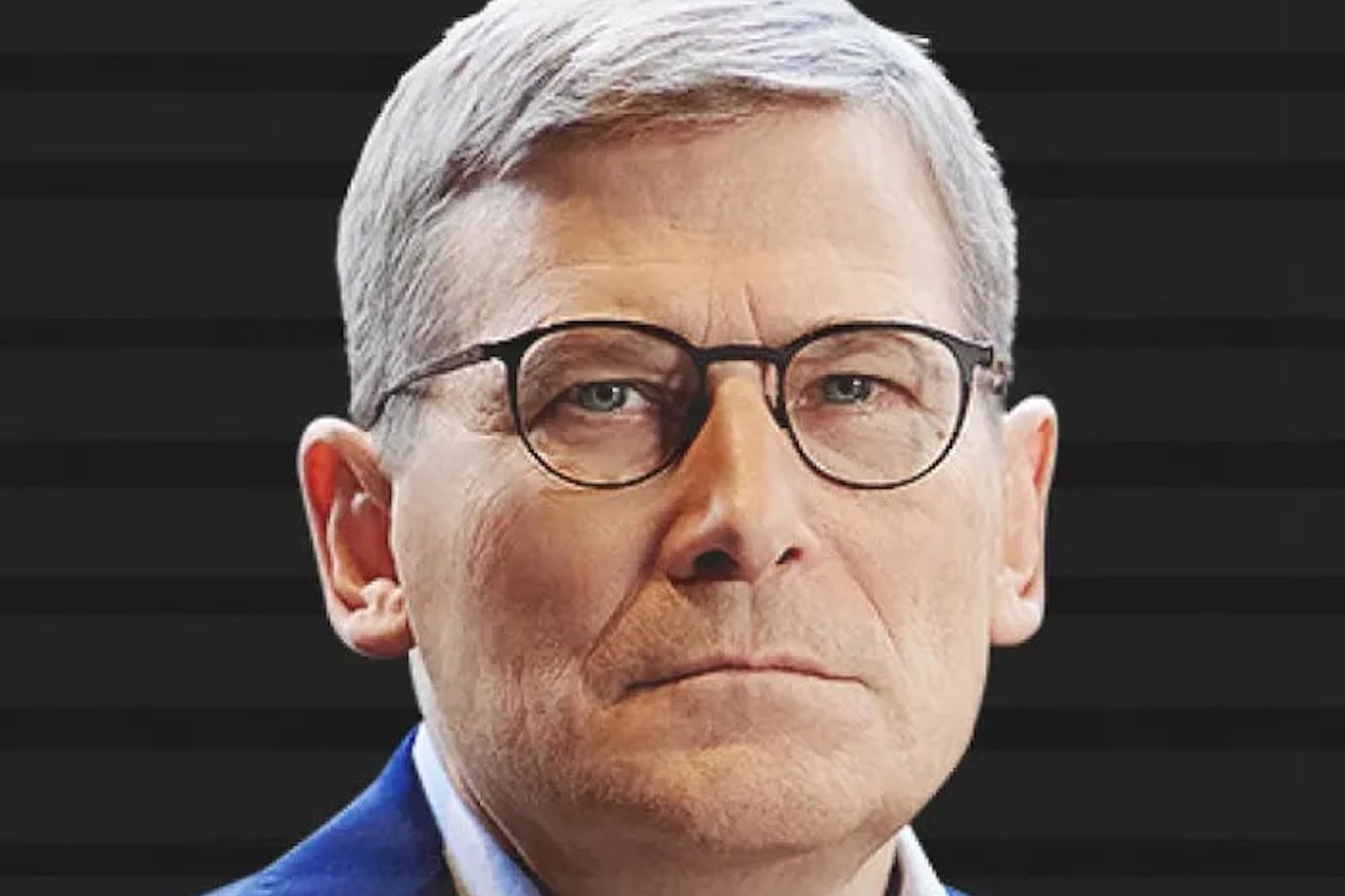Side Hustles
Former CIA Officer: How to Lead, Detect Lies With Body Language

Michael Morell, former deputy director and two-time acting director of the CIA, is no stranger to high-stakes situations.
Image Credit: Courtesy of MasterClass. Michael Morell.
Over the course of his decades-long career with the agency, Morell had to lead under pressure on numerous occasions, from briefing President George W. Bush during the 9/11 attacks to conducting secret negotiations in North Korea under President Barack Obama.
Morell didn’t set out to become a leader in the CIA, but when he was recruited at 22, the idea of serving his country and providing decision-makers with critical information convinced him to give the work a chance — and he kept doing it for more than 33 years.
Related: This Ex-CIA Officer’s Near-Death Experience Inspired Her to Start a Business That’s Earning Over 8 Figures a Year: ‘I Have a Higher Risk Tolerance Than Most’
“There’s something pure about that, where your job is to say what you really think, not based on policy preference or politics or anything like that,” Morell says. “It’s simply what you view the truth to be. You might be wrong sometimes, but it’s what you view the truth to be.”
In a new class on MasterClass, The Art of Intelligence: CIA Secrets for Success, Morell and CIA veterans Brian Carbaugh and Dawn Meyerriecks break down the decision-making frameworks and leadership strategies they honed at the highest levels of U.S. intelligence.
Entrepreneur sat down with Morell to discuss some of those lessons in critical thinking and adaptability and how they can create strong leaders across industries.
A lesson in leadership from President George W. Bush on 9/11
Morell remembers 9/11 “as if it were yesterday.” He was with President Bush on Air Force One. The Pentagon smoldered in the distance. An F16 was flying so close he could see the pilot.
The president’s military aid told Morell that the F16 was there to put itself between a potential missile and the president as a last line of defense. “It still sends shivers up my spine when I talk about it,” Morell says.
At one point, President Bush looked Morell in the eye and asked who was behind the attacks. Morell said that although Iran or Iraq were capable of orchestrating the attacks, the countries had nothing to gain and everything to lose. “So I told him, ‘I think when we get to the end of the trail, we’re going to find bin Laden and Al-Qaeda.'”
Related: The Day After 9/11, This Family-Owned Jam Company Lost All of Its Airline Business. But One Son’s Strategic Rebrand Has Brought Lasting Success.
Morell had to make a quick, critical assessment, but he says he learned the most from President Bush as a decision-maker that day. When Morell asked the president if he was okay, he replied, “I am just fine. And now I know why I’m president of the United States.” Morell recalls that he wasn’t angry, frustrated or rattled, “but steeled in his determination to make sure this is never going to happen again.”
That year also taught Morell what a president needs from their intelligence service: what works or doesn’t, and how to speak to a president when “you have to tell them things that they might not want to hear.” It can be uncomfortable, Morell admits, but it’s also how you learn to speak truth to power.
Related: Joe Biden’s Job Is Finished, Now What? Lessons and Cautionary Tales About Life After Power From Former Presidents.
Secret negotiations in North Korea, plus the challenge and importance of empathy
If somebody is spying for the U.S. on their country or group, whether that’s a terrorist or drug trafficking organization, you’re only going to get them to that point if you show a tremendous amount of empathy to them, according to Morell.
“You’re trying to understand what’s motivating them, trying to understand who they are and why they’re doing this,” he explains.
That’s what Morell tried to do in North Korea, where he conducted secret negotiations under President Obama. It wasn’t easy. The most challenging person to speak with was the head of their organization “that did not so nice things outside of North Korea [and had] assassinated people.”
“When I first walked into his office, he didn’t even say hello, didn’t shake my hand — he started the meeting by saying, ‘You can’t be here,'” Morell recalls. “I said, ‘Excuse me?’ And he said, ‘I am sanctioned by your government. So how is it possible for you to be sitting here speaking to me? Aren’t you breaking the country’s laws by talking to me?'”
It was hard to show empathy in that situation, Morell admits. Generally speaking, when it comes to extending empathy, there always has to be a little give and take — and the person who’s trying to accomplish a goal, whether that’s getting an opponent on their side or something else, has to be the one to initiate that understanding, he says.
Related: What Is Empathy, and Why Is It So Important for Great Leaders?
How to build on empathy to cultivate key relationships and trust
Once you’ve used empathy to get to know someone and develop a relationship that goes beyond the job at hand — maybe it’s bonding over sports, movies, books or your kids — it makes it much easier to give them direct, constructive feedback, Morell says.
The strategy can be particularly effective for people in leadership positions if an employee makes a mistake or doesn’t show good judgment. Morell often used the tactic in the CIA; leading with compassion and understanding made the hard conversations more palatable.
“I could actually truly say to [a team member], ‘Michael, I love you. I really love you, but what were you thinking when you did X, Y or Z?’ So they know that you really love them, right?” Morell explains. “And it makes it a lot easier to say that, ‘But what were you thinking?'”
Related: Trust Needs To Be Earned — Not Demanded. Here Are 5 Crucial Leadership Elements to Earn Your Team’s Trust.
Additionally, whenever Morell had to provide less-than-positive feedback on an intellectual product, like a paper or report, he avoided talking about the individual negatively and instead focused on the work itself — swapping “Here’s what you didn’t do” for “Here’s what the paper didn’t do.”
That leadership strategy made it easier to fix the product and deliver it to the president on time, Morell says.
How to detect deception using body language in under 30 minutes
The most effective leaders, whether in the CIA or business, must also be able to tell when trust breaks down.
To determine if someone’s lying to you, it’s essential to understand that person’s baseline behavior, Carbaugh notes in the course. Pay attention to how they act during the “normal cadence of conversation”: how they communicate thoughts and answer questions in a typical, non-threatening scenario.
Carbaugh recalls one instance in the wake of 9/11 when he was attempting to gather information about bin Laden and other Al-Qaeda leaders. He knew one informant wasn’t being truthful when he began shaking his leg — he’d been still up to that point.
Related: How to Detect a Liar in Seconds Using Nonverbal Communication
When someone’s being deceitful, their body language and speech patterns might offer important clues. But one person’s tell won’t necessarily resemble another’s, as everyone’s baseline behavior can be different.
However, according to Morell, it shouldn’t take long to pick up on someone’s baseline behavior — you can probably get a clear sense of it in under 30 minutes.
Baseline behaviors might vary, but eye contact, or lack thereof, can be a common tell.
Morell shares a pertinent example: Someone makes eye contact with you during the entire conversation, then says something that doesn’t sound quite right — and they’re not looking at you anymore.
Related: This Body-Language Expert’s ‘Triangle’ Method Will Help You Catch a Liar in the Act
The fence-in-the-field metaphor and what makes a strong, effective leader
As deputy director of the CIA, Morell often spoke with his fellow leaders about the metaphor of a fence in the field.
The idea is this: You and your employees are both in a field, and there are three possible outcomes, only one of which is correct. You don’t want your employees to be on one side of the fence while you’re on the other. You also don’t want to join your employees on their side of the fence. Instead, you have to convince people to come over to your side of the fence.
Morell offers an example to illustrate the point in practical terms. “When your employees complain to you about the five levels of review to get something to the president, do you join them and complain about it too?” He asks. “Or do you explain to them why it makes sense and why it’s so important?”
“It’s about knowing how to manage the organization to get the job done today and make it even better tomorrow.”
In addition to keeping the fence-in-field metaphor in mind, strong, effective leaders must do three things, according to Morell.
First, good leaders need to know their business inside and out. “Now, it doesn’t mean you need to know it when you walk in the door,” Morell explains, “but if you don’t know it when you walk in the door, you better learn it pretty quickly. Learn the business, learn the culture, learn how things get done. Because you can’t run a place without that.”
Related: 5 Ways to Be a Strong Leader
The best leaders also have a vision and plan for exactly where they want to go — and know how to articulate that to a team.
“People want to follow somebody,” Morell says, “and if they don’t think you’re going somewhere, they’re not going to look at you in the right way.”
Finally, successful leaders deal with everyone on their team individually. Managers should set expectations for every person who works for them at any level and provide feedback regularly, not once or twice a year, but almost daily, according to Morell.
Related: 5 Ways Strong Leaders Navigate Uncertainty with Agility and Empathy
Effective leaders should also know their employees’ motivations and goals and what support they need to grow and be willing to have frequent conversations with them on the topic, Morell says.
“It’s about knowing how to manage the organization to get the job done today and make it even better tomorrow and have your employees fully understand that,” Morell says. “And then it’s about managing the individual and getting the best out of them and managing their careers so that they know you have their interests at heart.”
Read the full article here

-

 Passive Income6 days ago
Passive Income6 days agoJoin the Highest-Growing Industry in 2025 With This $60 Cybersecurity E-Learning Bundle
-

 Side Hustles4 days ago
Side Hustles4 days agoAI Agents Are Becoming More Humanlike — and OpenAI Is Launching a New One in January. Are Entrepreneurs Ready to Embrace the Future?
-

 Passive Income4 days ago
Passive Income4 days agoSending A Last-Minute Marketing Email? Follow This 7-Step Checklist to Avoid Making These Costly Mistakes
-

 Investing3 days ago
Investing3 days agoMaersk asks customers to remove cargo before potential strike at US ports By Reuters
-

 Investing3 days ago
Investing3 days agoCheck it Out: An AI Multi-Tool for Any Budget
-

 Make Money7 days ago
Make Money7 days agoHow to Make Money with Print on Demand: A Step-by-Step Guide
-

 Investing7 days ago
Investing7 days agoSquid Game season debut hits South Korean stocks By Investing.com
-

 Side Hustles7 days ago
Side Hustles7 days agoWhy Product Managers Hold the Key to Ethical AI Success


















